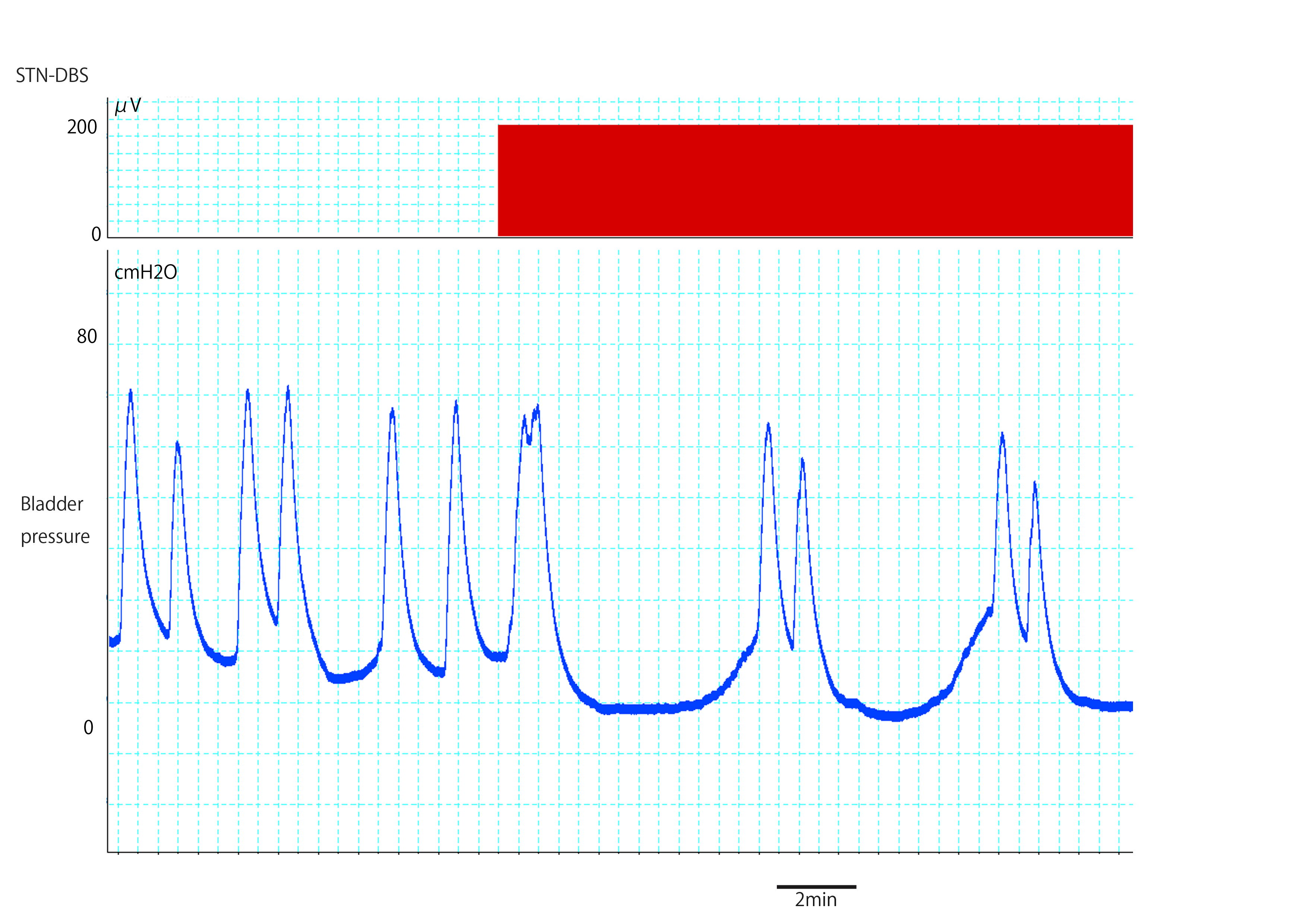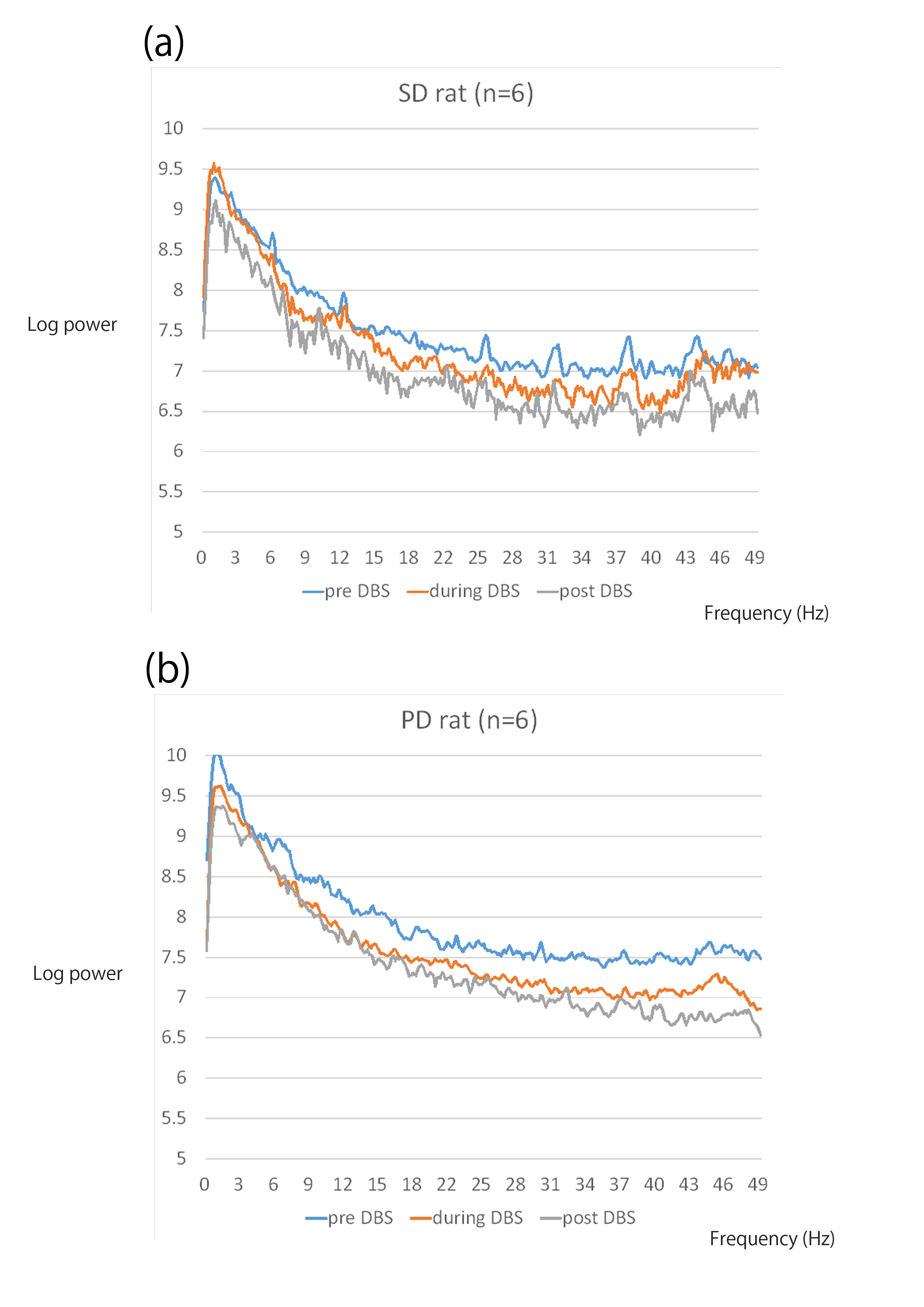Session Information
Date: Monday, October 8, 2018
Session Title: Parkinson's Disease: Non-Motor Symptoms
Session Time: 1:15pm-2:45pm
Location: Hall 3FG
Objective: We aimed to clarify the changes in neuronal activity (local field potential and levels of monoamine) of mPFC induced by STN-DBS with relation to bladder contraction using normal and PD model rats.
Background: The subthalamic nucleus deep brain stimulation (STN-DBS) is widely used for alleviating motor complications in the advanced stage of patients with Parkinson’s disease (PD). Although lower urinary tract symptoms (LUTS) such as overactive bladder (OAB) are also prevalent in advanced stage of PD, the efficacy of STN-DBS on LUTS are not well elucidated. The medial prefrontal cortex (mPFC) is known as higher micturition centre and receives output signal of basal ganglia which is highly modulated by STN-DBS. Therefore, STN-DBS might regulate bladder contraction by changing the activity of mPFC.
Methods: Experiments were performed under urethane anesthesia in normal and 6-hydroxydopamine hemi-lesioned PD model rats. STN-DBS was applied to the left STN, and bladder contractions were monitored simultaneously. Local field potential (LFP) in mPFC was recorded before, during and after STN-DBS (n=6: normal rats, n=6: PD rats). Extracellular fluid in mPFC was collected before, during, and after STN-DBS (n=5: normal rats, n=6: PD rats).Each experiments were performed separately. Spectral analysis of LFP for calculating beta power was performed, and the levels of monoamine were measured.
Results: STN-DBS significantly increased inter bladder contraction interval in normal and PD rats (Fig.1). The beta power in mPFC was significantly decreased during and after STN-DBS in normal and PD rats (Fig.2). The levels of levodopa, dopamine, serotonin and their metabolites in mPFC were significantly decreased during and after STN-DBS in PD rats, whereas the levels of serotonin and its metabolite and homovanillic acid (HVA) were significantly decreased after STN-DBS in normal rats (Fig.3).
Conclusions: STN-DBS could increase inter bladder contraction interval in normal and PD rats probably by changing the neural activity as evaluated by the beta power and monoamine levels in mPFC. The effect of STN-DBS on the levels of monoamine in mPFC was different between normal and PD rats.
To cite this abstract in AMA style:
T. Yamamoto, R. Sakakibara, T. Uchiyama, S. Kuwabara. The subthalamic stimulation inhibit bladder contraction by modulating local field potential and monoamine in the medial prefrontal cortex [abstract]. Mov Disord. 2018; 33 (suppl 2). https://www.mdsabstracts.org/abstract/the-subthalamic-stimulation-inhibit-bladder-contraction-by-modulating-local-field-potential-and-monoamine-in-the-medial-prefrontal-cortex/. Accessed April 18, 2025.« Back to 2018 International Congress
MDS Abstracts - https://www.mdsabstracts.org/abstract/the-subthalamic-stimulation-inhibit-bladder-contraction-by-modulating-local-field-potential-and-monoamine-in-the-medial-prefrontal-cortex/



